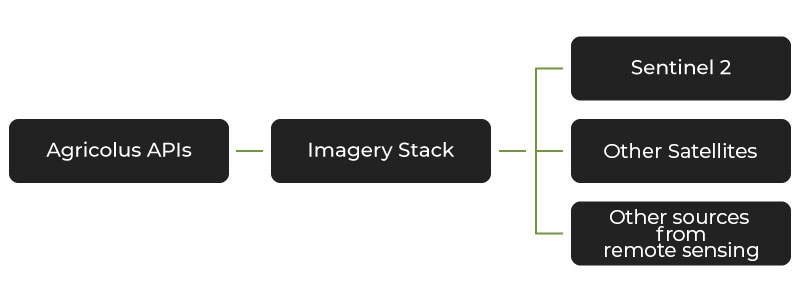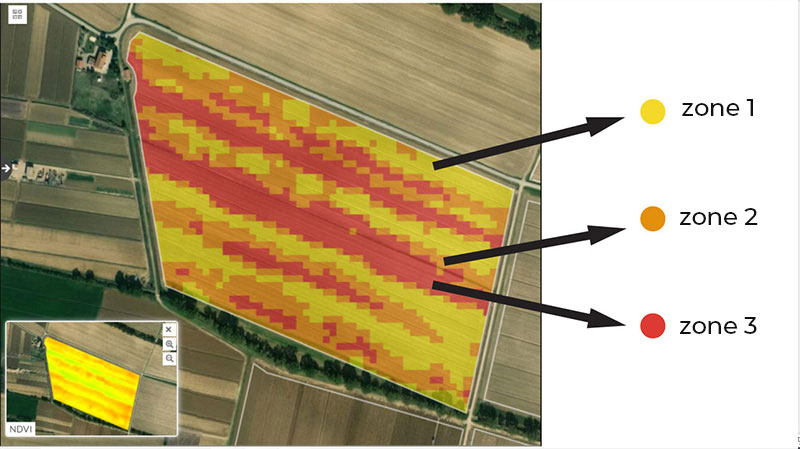Simplify integration with the services you offer to your clients
Agricolus’s APIs Imagery are libraries which allows you to easily integrate your offer with vegetation indices elaboration, prescription maps creation, and the identification of management zones obtained from satellite images.
How APIs Imagery work

The satellite images elaboration process is carried on internally by Agricolus team. We start with raw satellite data, which are pre-processed in order to exclude non-agricultural areas, then we follow the following steps:
- Indices Calculation: : indices are calculated using specific algorithms.
- Indices Normalization: indices undergo a resizing process between the minimum and maximum value within a user-defined area in order to improve visualization by enhancing local variability.
- Indices Resampling: resampling allows for a better visualization of the spatial distribution of indexes.
- NDVI (Normalized Difference Vegetation Index)
- GNDVI (Green-NDVI)
- SAVI (Soil-Adjusted Vegetation Index)
- WDRVI (Wide Dynamic Range Vegetation Index)
- LAI (Leaf Area Index)
- TCARI/OSAVI (Transformed Chlorophyll Absorption Ratio Index/Optimized Soil-Adjusted Vegetation Index)
- NDMI (Normalized Difference Moisture Index)
- NMDI (Normalized Difference Drought Index)
Prescription maps
Prescription maps are a precision agriculture tool that enables variable-rate fertilization, to improve fertilizer’s optimal use, associating each area of the field with the most suitable amount of input.
Variable rate fertilization is based on field’s division into homogeneous zones in which the same dose of fertilizer can be applied.
Agricolus offers an innovative method to identify homogeneous zones: starting from a vegetation index such as NDVI, the algorithm defines the maximum number of zones into which it is meaningful to divide the field and the corresponding value of each zone, based on a statistical index.
Arable land management areas
Starting from the analysis of historical data from a vegetation index or yield maps, we can develop thematic maps in order to identify stable and unstable zones within the field and recurring characteristics of each zone, i.e., those that are difficult to change due to temporary stresses.






